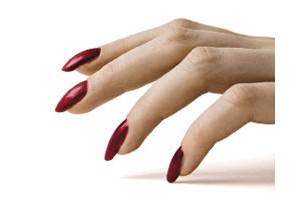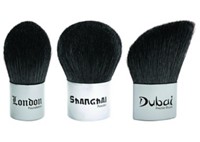Advertisement
Grab your lab coat. Let's get started
Welcome!
Welcome!
Create an account below to get 6 C&EN articles per month, receive newsletters and more - all free.
It seems this is your first time logging in online. Please enter the following information to continue.
As an ACS member you automatically get access to this site. All we need is few more details to create your reading experience.
Not you? Sign in with a different account.
Not you? Sign in with a different account.
ERROR 1
ERROR 1
ERROR 2
ERROR 2
ERROR 2
ERROR 2
ERROR 2
Password and Confirm password must match.
If you have an ACS member number, please enter it here so we can link this account to your membership. (optional)
ERROR 2
ACS values your privacy. By submitting your information, you are gaining access to C&EN and subscribing to our weekly newsletter. We use the information you provide to make your reading experience better, and we will never sell your data to third party members.
Coatings
What’s that Stuff
What's that stuff? Nail Polish
Classic formulas behind chip-free coatings slowly get a makeover
by Carmen Drahl
August 11, 2008
| A version of this story appeared in
Volume 86, Issue 32
YVONNE MILLNER'S CHOICE of car paint really shouldn't have been all that shocking. A few years ago, the South Carolina resident used hundreds of bottles of nail polish to decorate her 1996 Mitsubishi Mirage and received a din of media coverage in return. Although Millner's brightly colored handiwork was certainly attention-getting, the hullabaloo was misplaced from a scientific standpoint because nail polish and automobile paint have common chemical roots.
The key ingredient in nail polish is nitrocellulose, a long-lasting, film-forming agent derived from cellulose. But before nitrocellulose was put into nail polish, it was used as a component of automobile paint by chemists at DuPont. Shortly after the car paint's 1920 debut, nail enamel formulations containing nitrocellulose appeared in patent literature. The patents detail the deposit of a pigment-impregnated film on finger- and toenails just as on car surfaces. The nitrocellulose-containing paint was initially so popular that within four years it covered all of General Motors' cars. The auto industry has long since moved on to other coatings, says DuPont spokesman Rick Straitman. But nitrocellulose, which is also a component in fireworks known as "gun cotton," remains a constituent of many nail polishes today.
Nail polish was not a new idea in the 1920s, although in terms of technology, the period marked a "quantum leap in both formula and production," says history of science expert Gwen Kay at the State University of New York, Oswego. Records from 17th- and 18th-century European royal courts document the appearance of shiny, varnished nails, she says. In addition, 19th-century recipe books from both Britain and the U.S. contain instructions for making nail paints alongside recipes for bread.
The modern formula isn't likely to be in cookbooks because the ingredients aren't exactly tasty. According to Paul Bryson, director of research and development at professional nail care company OPI Products, nail polish also contains adhesive polymers, such as tosylamide-formaldehyde resin, that ensure the adherence of nitrocellulose to the nail surface. Plasticizers, such as camphor, embed between polymer chains, spacing them such that the polish is flexible and will not easily crack or chip.
Pigments and sparkling particles, such as mica, are also added. To make sure glittery particles don't sink to the bottom of the bottle, manufacturers add thickening agents, such as stearalkonium hectorite, to adjust the polish's viscosity. Ultraviolet stabilizers, such as benzophenone-1, prevent polish from changing color when exposed to UV light. All of these ingredients are dissolved or suspended in a solvent, such as butyl acetate or ethyl acetate, which evaporates to leave behind the colorful finish.
Since the 1920s, "the nail polish formula hasn't really been modified except to replace ingredients in response to consumer demand," says formulations chemist and consultant Nick Morante, a former head of product development at Estée Lauder Cos. A high-profile change to the recipe came in 2006, when manufacturers eliminated the plasticizer dibutyl phthalate. The change came in response to concerns voiced by environmental groups and European legislators about the ingredient; studies indicate that dibutyl phthalate could interfere with the endocrine system (C&EN, Aug. 4, page 8). Many companies have also eliminated the solvent toluene in response to safety concerns, Bryson says.
Water-based nail polishes represent the biggest departure from the classic formulas. The basic elements are the same: "We need a solvent, a pigment, and something to make a film," says Mark Deason, a spokesman at Acquarella Nail Polish, which specializes in polishes and removers that do not contain petrochemical solvents. But the similarity ends there, he says. Acquarella's polishes replace nitrocellulose with a variant of a styrene-acrylate copolymer. Instead of depending entirely on solvent evaporation to dry the polish, Acquarella's technology relies on the fact that the keratin in nails allows some water to pass through them, Deason explains. The product, he says, appeals to consumers who have sensitivity to old formulas or who are simply looking for more environmentally friendly cosmetics.
The old formulas work just fine for some customers, though. Take ex-satellite-TV hacker Christopher Tarnovsky. He used nitrocellulose-based nail polish when circumventing the physical security built into satellite subscribers' microchip-containing cards. As reported by Wired, nitrocellulose is resistant to the hydrofluoric acid Tarnovsky employed to break down mesh covering the circuitry. Nail polish, therefore, acts as a temporary shield for the parts of the chip he wasn't trying to crack open. The shade he used is telling: It's a deep crimson by Orly, appropriately named "Naughty."







Join the conversation
Contact the reporter
Submit a Letter to the Editor for publication
Engage with us on Twitter